

Dream Catcher Botanicals. European Commission to Ban Heirloom Seeds and Criminalize Plants & Seeds Not Registered with Government. All in the name of “safety,” of course!

In case the May 2012 EU banning of most herbs didn’t wake up the continent, here’s another Beyond Orwell step in the global monopoly of all food and medicine known as Codex Alimentarius. For those who haven’t yet connected the dots, each continent focuses on implementing only a few of the most absurd abuses, and then the TPP and TTIP, Trans-Pacific and Trans-Atlantic “trade” treaties swoop in to enforce the lowest common denominator of human rights and food quality. Are we really going to let Jabba the Hut reveal himself as prophet? “Control oil and you control nations; control food and you control the people.”
How to Grow #Somniferum Poppies Growing our #SEEDS for GIANT Poppy #PODS. How to Pick the Best Organic Seeds & Avoid GMO Seed Varieties. Christina Sarich, Natural SocietyWaking Times GMO?
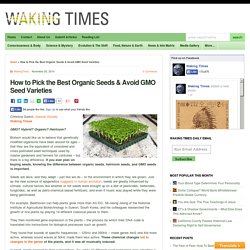
Hybrid? Organic? Cultivariable. Heirlooms, hybrids and GMOs: A hackers guide to knowing the difference. Wednesday, May 21, 2014 by: Derek HenryTags: GMOs, heiloom seeds, hybrid plants (NaturalNews) There has been plenty of discussion surrounding the food supply, and for good reason.
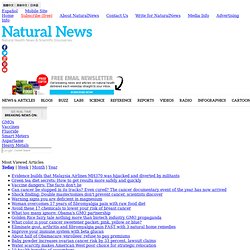
Natural, nutritious food seems to be rare compared to its altered, compromised counterparts. Individual Collections. Growing Guide: 135 Rare Heirlooms from Jardin Seed Co.: Gardenista. Older Growing Guide: 135 Rare Heirlooms from Jardin Seed Co. by Michelle Slatalla Issue 2 · Cook's Garden · January 14, 2015 Newer Issue 2 · Cook's Garden · January 14, 2015 I would like more Self-Blanching Snowball Cauliflower in my diet.
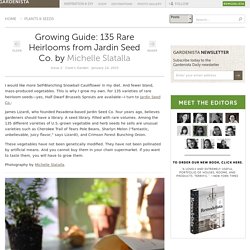
Scratch Mommy – Life, From Scratch You Would Be 'Blessed' To Have This Holy Thistle In Your Gardens! Welcome to Part Three of my gardening miniseries where I’m introducing a few things I’m growing in my gardens this summer (and tell you why I’m growing them)!

Click the links for parts one (German Chamomile) and two (Orange Giant Amaranth). Today I’d like to introduce you to a a lovely flower/herb/thistle called Blessed or Holy Thistle (Cardernia benedicta). Vegetable growing cheat sheet - Imgur. Cool-season vegetables. Arugula grows quickly and flourishes in cool weather.

Rob D. Brodman Click to Enlarge Grow your own greens Make healthy meals easy with garden-fresh arugula, chard, lettuce, and more. Get our quick-start guidemore. Warm-season crops. Vegetables are classed as either warm- or cool-season, depending on the weather they need for best growth.
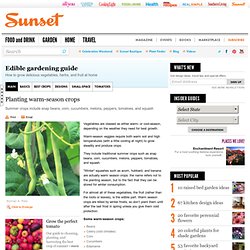
Warm-season veggies require both warm soil and high temperatures (with a little cooling at night) to grow steadily and produce crops. They include traditional summer crops such as snap beans, corn, cucumbers, melons, peppers, tomatoes, and squash. “Winter” squashes such as acorn, hubbard, and banana are actually warm season crops: the name refers not to the planting season, but to the fact that they can be stored for winter consumption. For almost all of these vegetables, the fruit (rather than the roots or leaves), is the edible part. Warm season crops are killed by winter frosts, so don’t plant them until after the last frost in spring unless you give them cold protection.
Netbutik. Kelnanplants. Runåbergs fröer - Ängsväxter. The 16 Best Healthy, Edible Plants to Grow Indoors. From farmers’ markets and Community Supported Agriculture, to urban farms and rooftop gardens, to produce delivery services, more and more people across the U.S. are embracing farm-fresh food.
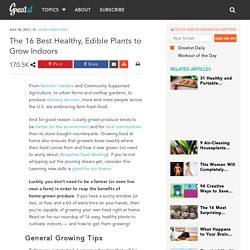
And for good reason: Locally grown produce tends to be better for the environment and for local communities than its store-bought counterparts. Growing food at home also ensures that growers know exactly where their food comes from and how it was grown (no need to worry about deceptive food labeling). If you’re not whipping out the pruning shears yet, consider this: Learning new skills is good for our brains. Luckily, you don’t need to be a farmer (or even live near a farm) in order to reap the benefits of home-grown produce. Improved Non-GMO Corn Performing Better Than GMO Crops.
Heather Callaghan, ContributorWaking Times Despite genetically modified corn comprising up to 90% of corn crops in the United States, non GMO hybrid corn (often called conventional) has managed to hang on.

There appears to be a steady rising market for non-GMO corn. Spectrum Premium Non-GMO is an independent “genetic improvement” seed company based in Indiana and selling non-GMO seed in most states.